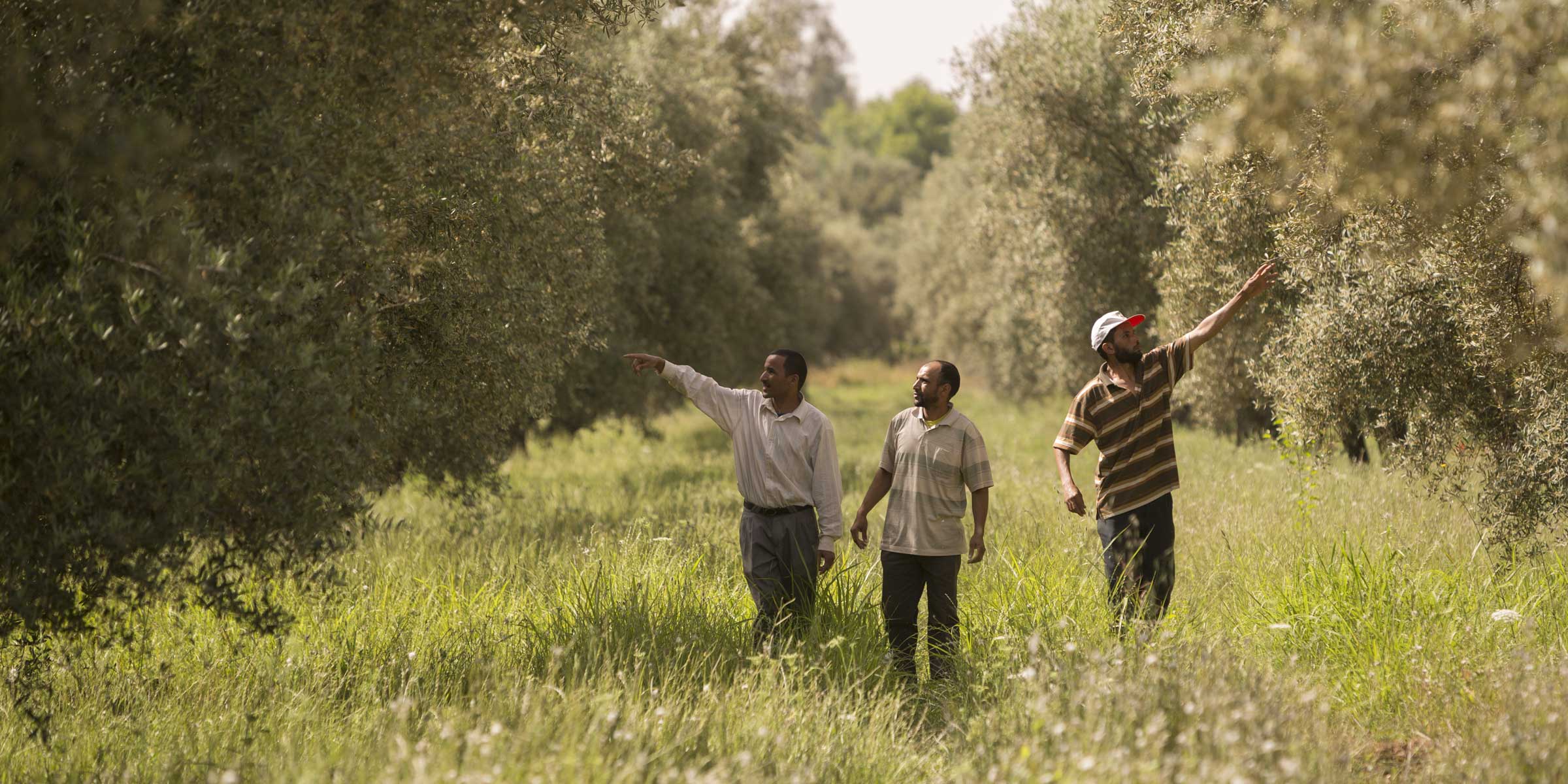Program Overview
MCC’s $650.1 million Morocco I Compact (2008-2013) funded the $324 million Fruit Tree Productivity Project under which the Rehabilitation and Intensification of Rain-fed Olive Trees Sub-Activity was funded. The sub-activity aimed to increase the quality and quantity of olives and olive oil sold, and ultimately incomes. The interventions trained 40,000 farmers on pre-production techniques, over 230 professional agriculture organizations on marketing and other topics, and 100 processing units on post-production practices; and commercialized and created Economic Interest Groups.
Key Findings
Strengthening Market Power
- The sub-activity created and registered 120 professional agriculture organizations (PAOs) and engaged PAOs to create 22 Economic Interest Groups (EIGs).
- 110 processing units (PUs) developed a business plan and 34 of these PUs signed agreements to improve their crushing units.
- However, by 2013, the newly created PAOs and EIGs were considered not fully operational.
Adoption of New Techniques
- The impact evaluation “Intention to Treat” (ITT) model found no impacts on farmers adopting new production and processing techniques.
- The impact evaluation “Treatment-on-the-Treated” (TOT) model measured moderate increased adoption in four out of the 17 techniques, including increases for treatment farmers: using manure (from 33 percent to 41 percent), pruning (from 49 percent to 68 percent), and digging basins to collect rainwater (from 3 percent to 8 percent).
Olive and Olive Oil Production
- The impact evaluation ITT model found no impacts on olive production, while the TOT model measured a 309 kg decrease in olive production, likely due to an increase in pruning activities.
Farm Income, Household Income, and Sustainability
- While the sub-activity aimed to increase farm income by 15.6 percent, the impact evaluation found no increases in farm or household income from olives.
Evaluation Questions
The final impact evaluation was designed to answer if the training and support to farmers:
- 1
Increased adoption of production and processing techniques? - 2
Increased the quantity of olive production? - 3
Improved the quality of olive oil? - 4
Increased the market value of olives? - 5
Increased farm income from olives?The final performance evaluation was designed to answer if the training and support to agriculture organizations and processing units:
- 6
Had a valid project logic? - 7
Achieved the objectives defined in the logical framework? - 8
Had specific success factors or impeding factors with respect to the achievement of the program objectives? - 9
Had opportunities or threats that worked for or against the sustainability of results?
Detailed Findings
Strengthening Market Power
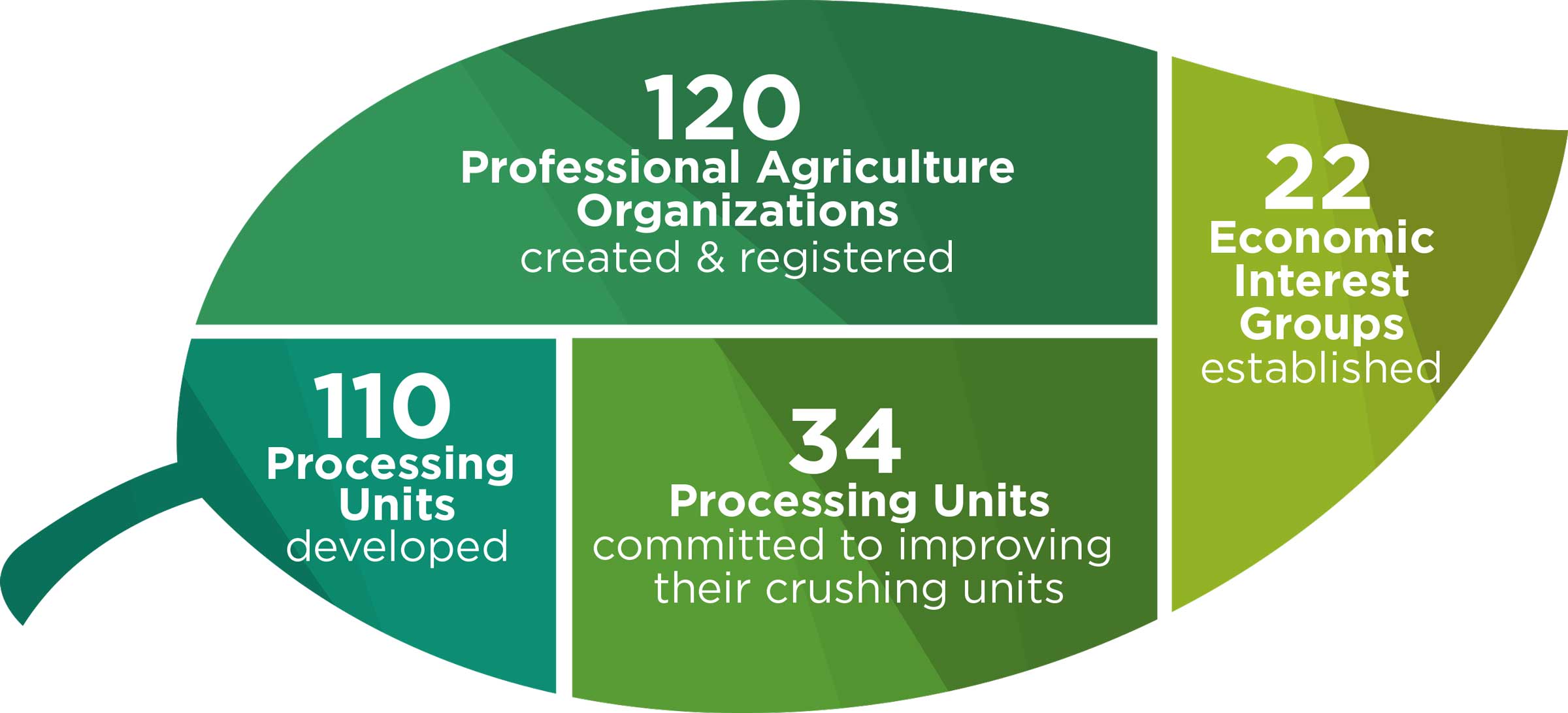
Most farmers owned small land plots and did not produce sufficient olive oil for large customers. Mobilizing farmers to create professional agricultural organizations (PAOs) and Economic Interest Groups (EIGs) was therefore a major result. To achieve this, the sub-activity reduced the process to create a PAO from 10-14 months to 5-6 months. The creation of the 22 new EIGs required a certain number of registered PAOs, funding, and formal documentation. This was a complex and new process for Morocco. As of 2013, the newly created PAOs and EIGs were considered not fully operational. For example, of the 22 EIGs, only ten had been trained in marketing, two had sales contracts, and six had sold oil during the 2012-2013 season.
Adoption of New Techniques
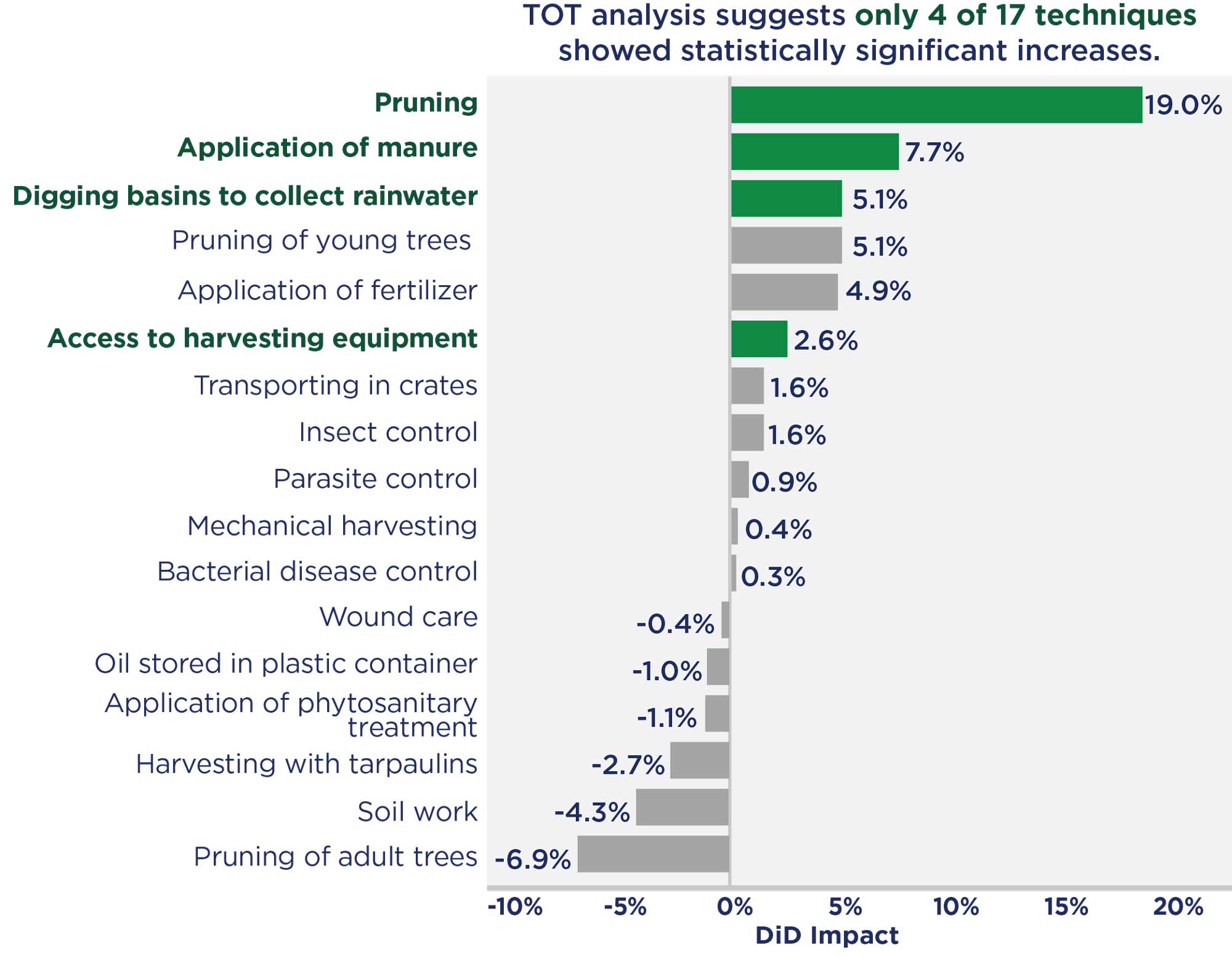
Even when using the least rigorous analysis, aside from a larger increase in pruning, there were moderate impacts on adopting new techniques. According to the performance evaluation, several factors likely undermined expected results, including: (1) delays in studies to identify and define treatment perimeters and participants which reduced the time farmers received support to 6-24 months, rather than 12-36 months; (2) lack of trainee criteria which resulted in trainees from outside treatment areas and trainees without the skills needed to understand the subject matter; (3) insufficient mentoring, as only 15 percent of farmers in the treatment perimeters reported they were mentored; and (4) inadequate resources for farmers and processing units – financial or in-kind – to obtain the equipment and materials necessary to implement new practices.
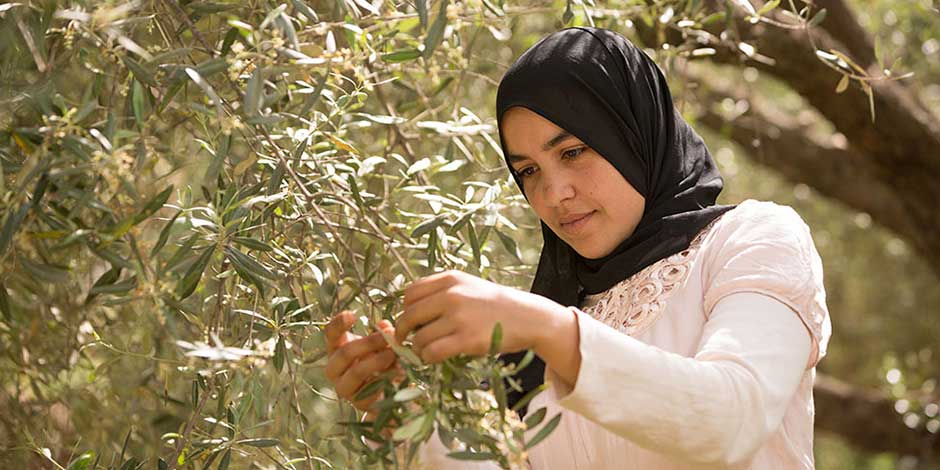
Olive and Olive Oil Production
According to the performance evaluation, PAO members reported a better knowledge regarding olive oil quality—for example, that low acidity level is associated with high-quality oil. In addition to no impacts on olive production, the evaluator noted that processing units (PUs) did not have the economic motivation to upgrade their units given the number of deficiencies that affected quality of olive oil production, including location, design, equipment issues, and poor hygiene and sanitary practices.
Farm Income, Household Income, and Sustainability
The impact evaluation found no increases in farm or household income. Risks to achievement and sustainability of results include (1) an uncertain transition plan from the compact’s implementing entities to the newly formed National Agency for Agricultural Advisory Services; (2) barriers to purchase the necessary tools and materials; (3) scarcity of skilled labor; (4) ineffective professional agriculture organizations and EIGs; and (5) lack of a local market demand for better-quality oils.
MCC Learning
Understand how changes in treatment definition will impact expected results. For example, the definition of a “trained farmer” was initially a farmer “participating in the four training modules.” This definition was changed to “participating in at least one training module.” By not participating in all modules, many farmers lacked exposure to techniques that were needed to achieve expected results.
Carefully consider the criteria for participating in training, timing of training with the agricultural season, the content and duration of training, and including practical, hands-on exercises alongside theory-based content.
Rather than informal training, working with a qualified training center to organize a competitive examination and issue trainees a professional certificate upon program completion would support formal professional development and employment opportunities.
For programs training farmers on new techniques, MCC should consider how farmers will obtain assistance (financial and/or in-kind) to obtain equipment and supplies (i.e. pruning materials) to convert knowledge of new techniques into practice.
Evaluation Methods
The sub-activity was planned for 45,000 hectares of olive trees across 17 provinces in Morocco. The evaluation sample focuses on 84 treatment perimeters (a cluster of 200-250 hectares of olive trees) and 58 control perimeters in 12 provinces (Larache, Ouezzane, Tetouan, Al Hoceima, Sefrou, Taounate, Zouagha Moulay Yacoub, Al Haouz, Azilal, Essaouira, Khenifra, and Taza). Treatment perimeters received training and support in January 2011, giving an exposure period between training and evaluation of 12-24 months.
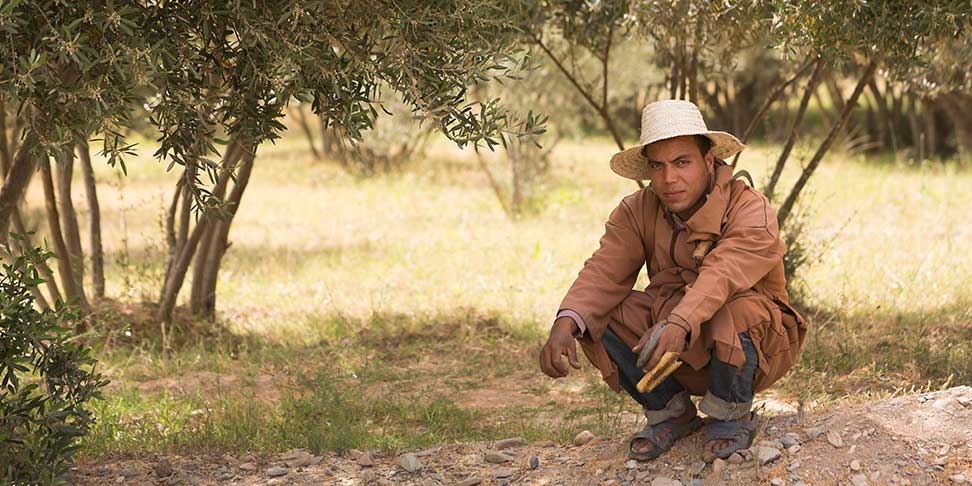
The impact evaluation used a randomized controlled trial methodology with difference-in-differences. Although eligible perimeters were matched and then randomly assigned to receive training or not, farmers self-selected into the training in treatment perimeters. However, farmers who self-selected to participate may have other, unobservable characteristics that impact outcomes, such as stronger motivation to perform. This could result in “selection bias” where the estimated impacts on outcomes were not solely attributable to the intervention. For this reason, the primary evaluation analysis to control for potential selection bias was the “Intention to Treat” model. The evaluator also presented results using “Treatment on the Treated” and Instrumental Variable models. The evaluation relied on the following data:
- Household surveys sampled 2534 farmers (1561 treatment and 973 control) in 2011, 2422 (1599 treatment and 823 control) in 2012, and 2305 (1522 treatment and 783 control) in 2013. The impact analysis focused only on the panel of 1606 farmers (882 treatment and 724 control) present in all three survey rounds.
The performance evaluation used an ex-post methodology. In addition to leveraging program monitoring data, it relied on the following data:
- Enterprise surveys with professional agricultural organizations and GIE processing units,
- Focus groups with female farmers and children of farmers,
- Interviews with project and government stakeholders, and
- Direct observations of farmer training sessions and farmer plots.
Next Steps
A final study covering the full set of evaluation questions for the Fruit Tree Productivity Project’s Catalyst Fund Activity and Irrigation Activity is underway and results will be available in 2020.
2020-002-2362


